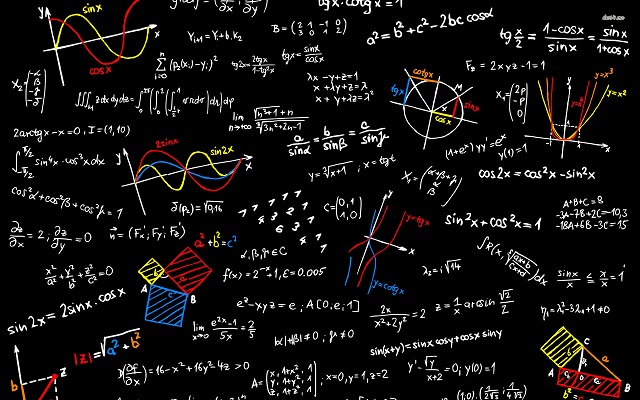Introduction
log 4: The logarithmic result is similar to the inverse exponentiation function. “Instead of asking what force do I need to reach a certain amount (let’s say ‘x’) and raise the base (let’s say ‘a’)?” As if exponentially, the logarithm asks “To what power must I raise the base ‘a’ to get the result ‘x’?”
Writing the log base of ‘x’ as ‘a’ means that we are looking for the power of ‘a’ to equal ‘x’. The base ‘a’ is just the number we’re working with.
Now, the two most common bases you usually see at a glance are 10 and ‘E’ (about 2.71828). If the base is 10, it’s called the common logarithm, and we usually just write “log” without explicitly mentioning the base. If the base is ‘e’, it is called the natural logarithm, and we write “ln”.
So in a nutshell, logarithmic functions help us figure out how much power we need to raise a certain amount (base) to get a new number. A normal logarithm uses base 10, and a natural logarithm uses a special number called ‘e’.
Value of Log 4
The value of log base 10 (log 4) is 0.6020. This means that if you raise 10 to the power of 0.6020, you get 4.
Now, let’s talk about log base ‘e’. Hence it means that the same unique number as 2.71828. The value of log base ‘e’ of 4 (ln 4) is different from log base 10. Hence, this would be 1.3863. This means that if you increase the power of ‘E’ to 1.3863, you get 4.
However, in simple terms, these logarithmic values tell us that the logarithms of the force required to increase a certain number (base). To reach another number (in this case, 4) is equal to exponential functions. Which contradict each other. They help us to understand the relationship between the rates obtained from the energies.
| Common logarithmic of 4 | Log10 4 = 0.60206 |
| Natural Logarithm of 4 | ln 4 = 1.386294 |
| Logarithm to the base 2 of 4 | Log2 4 = 2 |
Value of log 4 to the base e
The natural logarithm of 4 is written as “loge 4” or “log base e of 4.” And in this, we use the symbol ln to represent the natural logarithm. Hence we can also say that “ln(4)”.In easy terms ln(4) is like ,
What power should the special number ‘e’ (about 2.71828) be raised to, to get the result of 4? The answer is approximately 1.3863. So, ln(4) helps us figure out this relationship using the natural logarithm function.
| Natural logarithmic value = Common logarithmic value × 2.303 |
Therefore,
loge 4 = ln 4 = 0.60206 × 2.303 = 1.386
The value of loge 4 is equal to 1.386.
loge 4 = ln (4) = 1.386
Value of log 4 to the base 2
We can write the value of log 4 to the base 2 as:
log2 4 = log2 (2)2
= 2 log2 2 (By power rule of logarithm)
Let us say, log2 2 = x
Now we can write the above expression in exponential form.
2 = 2x
Since, 21 = 2
Thus, x = 1
Hence,
log2 4 = 2 log2 2 = 2 × 1 = 2
Therefore, the value of log 4 to the base 2 equals 2.
Solved Examples on Value of log 4
Question: Solve log (2 ×4 ×6).
Solution:
Given that, log(2 ×4 ×6).
Using the properties of the logarithm (log a + log b = log ab)
It can be written as,
log(2 ×4 ×6) = log 2 + log 4 + log 6 ….(1)
We know that,
log 2 = 0.3010
log 4 = 0.6020
log 6 =0.7781
Now substitute the log values in (1), we get
log(2 ×4 ×6) = 0.3010+0.6020 + 0.7781
log(2 ×4 ×6) = 1.6811
Therefore, the value of log(2 ×4 ×6) is 1.6811

Value of Log from 1 to 10
| Common Logarithm of a Number | Log Value |
| Log 1 | 0 |
| Log 2 | 0.3010 |
| Log 3 | 0.4661 |
| Log 4 | 0.6020 |
| Log 5 | 0.6989 |
| Log 6 | 0.6681 |
| Log 7 | 0.8450 |
| Log 8 | 0.9030 |
| Log 9 | 0.9542 |
| Log 10 | 1 |
Conclusion
In conclusion, logarithmic function helps us to understand. That is how much power we need to raise the certain number to get another number. If we are talking about log 4, it means finding the power to which a certain number(the base) must be raised to 4. Logarithmic is the reverse of the exponentiation. And the value of the log 4 with the base 10 is equal to 0.6020. Hence this indicates that the power of the 0.6020 is raised to 10 which is equal to the 4. On the other hand, log 4 with base ‘e’ (ln 4) is about 1.3863, meaning ‘e’ raised to the power of 1.3863 also equals 4.
Easily we can say that the logarithmic offers an easy way to understand the connection between exponential growth and decay.


